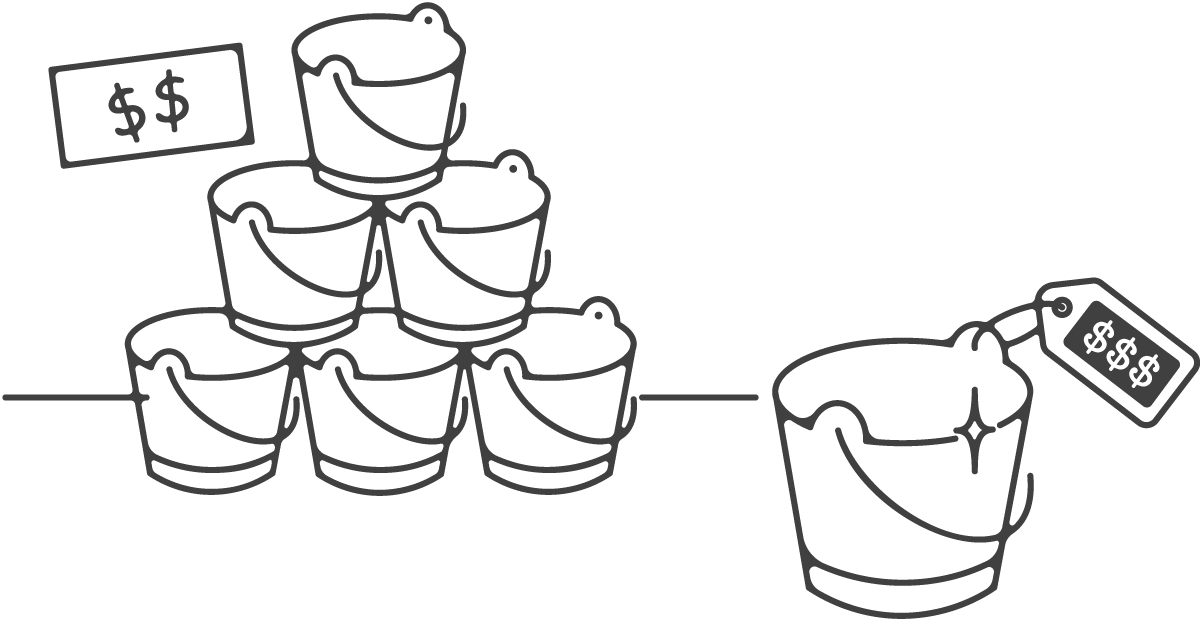Business owners are always looking for ways to make a difference. To change their situation to a noticeable degree – always looking for what “moves the needle”. It is a necessity in business and this is how many brands succeed and how business models have been refined over decades.
Businesses will look at two main factors when it comes to moving the needle: costs and sales. Obviously, sales are related to revenue, while costs are related to the expenses needed to fulfill the agreements of the sales. Both are the lifeblood of a business because you have to spend money to make money. This is where a business is given two options to improve financial performance. Let’s start with costs.
Costs are typically the initial reaction of a business trying to move the needle. Sometimes in a panic, they will look for expenses they can cut. It’s always good to review your finances and see what expenses may not be needed or may have slipped in. In personal finances, this could be like that streaming subscription you forgot about that is slowly eating away at your income. In business, it could be an unneeded cost like a special membership, certain advertising, or even a certain higher-paid employee.
These decisions are best made when you are not in a scarce mindset and you’re not stressed out. I say this because a business can shoot themselves in the foot by letting go of an employee or drastically cutting an expense that is essential for the business to add value. Again, good to review your costs, but don’t go cutting expenses thinking you can save your business or that you’ll find your way to success. In personal finance, that’s the same logic of budgeting your way to exponential wealth by cutting your costs. It’s mathematically not possible.
Your second option (sales) is a true point of leverage where you can really move the needle. Increasing revenue is a far better strategy for saving a business or furthering success. This is because by focusing on increasing sales and revenue, it forces your business to focus on value creation and value capture.
Value creation is the purpose of your business. By increasing the value you create for your audience, you’ll make yourself refine your current offerings, as well as find ways to pack-in more value. The power here is that by doing so necessitates you’ll have to observe and listen to your ideal audience through empathy. This will guide you in perfecting what you sell, as well as making more sales possible because your offering will be more on-point with the value it delivers. Increased sales will lead to increased revenue.
This is all done without considering the second portion. The real magic happens in the value capture of a brand’s offering. Based on the value you create in your offering, you are able to capture a premium by leveraging the power of brand. This is because brand enables you to further leverage perceived value. This is a strategic and effective way to increase profitability.

Value comes in two forms: objective and subjective. Objective value is typically related to the cost of the item or service. The price and the positioning of the offering can be a mixture of the objective and subjective value variables in the buyer’s perception. Ultimately, it comes down to the buyer’s internal question of “What’s in it for me?” For example, if you are selling a $3 plastic bucket. It’s a commodity and costs very little to make and sell. Objectively, this bucket is probably valued at that price range. There is little emotion involved in this decision. Now let’s say the buyer needs a bucket because their house is flooding from a leak. It would be easy to see a buyer paying $6 or even $9 for the same plastic bucket in an urgent scenario like this. The subjective value increased due to the context of the purchase. This happens all the time with airline tickets, hotel prices, plumbers, emergency services, etc. — the context of these can increase the perceived value, due to subjectivity.
The leverage here is that brand can do this through psychological elements like association, biases, and identity that uses the same subjectivity. The power of not only creating true value, but capturing its true worth to the buyer will help your business have a healthy revenue without increasing costs.
Essentially a business has to decide whether saving costs or creating value is better for them. In the long run, creating value is a much better solution that focuses on your audience, the value you create, and the health of your business. The best way to invest in the long term is through brand. Brand compounds faster than revenue, so making a short term decision to save costs will only bring some temporary relief, while brand will be a solution that brings a return to your reputation and profitability for years to come.

